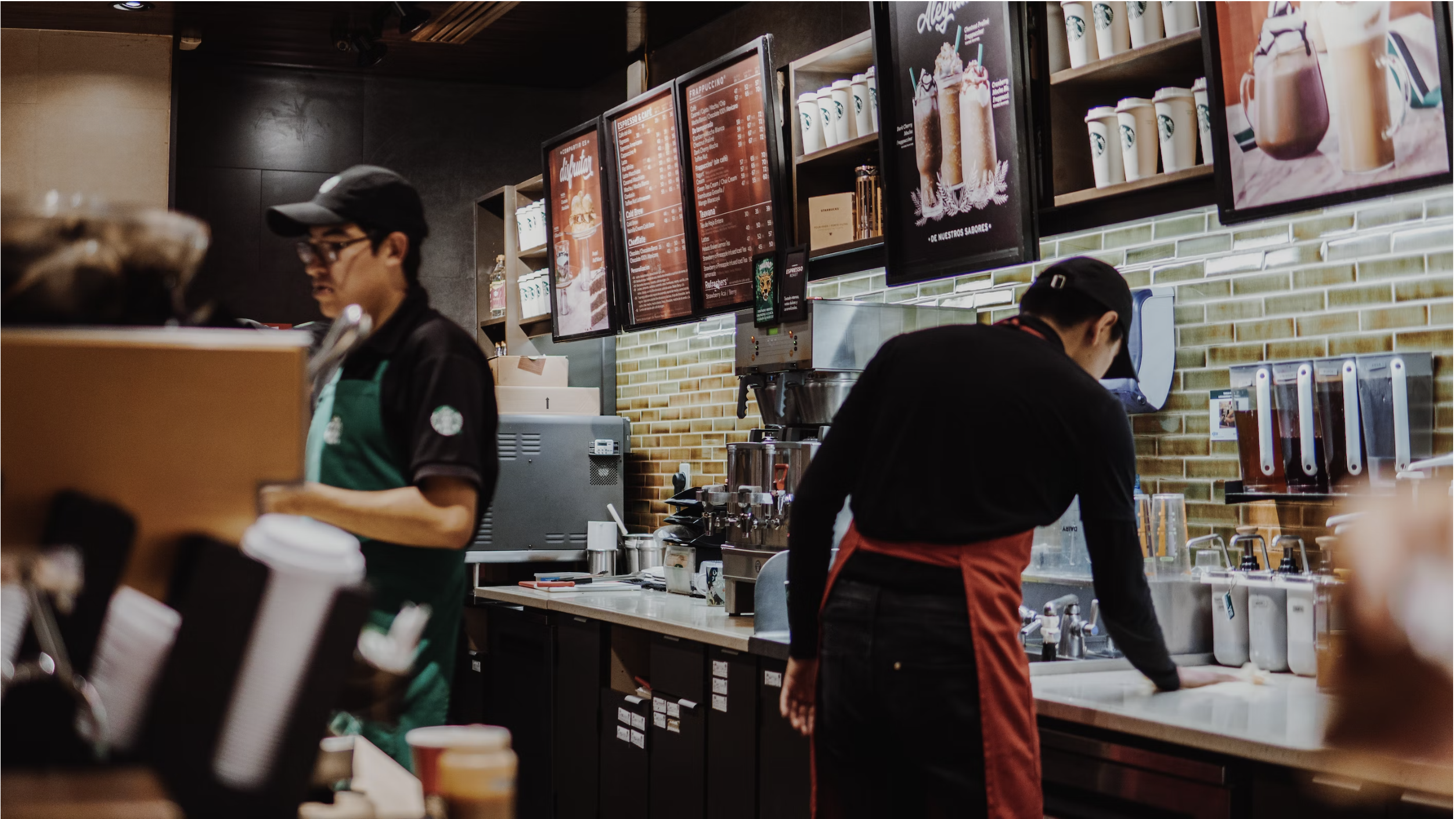In September, the longest strike in Starbucks history ended after over two months of round-the-clock picketing from workers at the company’s Commonwealth Avenue location in Boston. The workers’ grievances stemmed from a conflict with the store manager, Tomi Chorlian, who took over the location soon after its workers unionized for the first time in June. The workers alleged that Chorlian unilaterally cut hours, changed schedules without notice, and made “illegal threats of discipline or termination” if baristas failed to comply with a policy that demanded they be available open-to-close even when they were ultimately scheduled for fewer than 20 hours a week. Workers said these scheduling requirements would have forced many of them to quit and were unfairly imposed upon unionized stores as retaliation.
These complaints echo those of other Boston-area Starbucks baristas, whose recent unionization efforts have been discouraged using similar tactics in addition to anti-union meetings led by store managers, increasingly frequent visits from district managers, more aggressive “corrective action” for minor general offenses, and persistent dissuasive messaging.
Workers say these patterns constitute a concerted effort on the part of Starbucks to discourage unionization. Indeed, workers in states ranging from Arizona to Virginia have filed complaints against the corporation with the National Labor Relations Board, and the Boston City Council passed a resolution in April impelling Starbucks to halt its union-busting activities and engage in good-faith negotiations with its workers.
This unionization movement is far from unique to Starbucks. Amazon found itself at the center of a high-profile workers’ rights discourse last March, when workers at its Staten Island warehouse voted to unionize an Amazon facility for the first time. An Apple store in Maryland became the first in the tech company to join the International Association of Machinists and Aerospace Workers, and others seem poised to follow closely behind. A Massachusetts Trader Joe’s and a Michigan Chipotle became the first locations in their respective chains to unionize over the summer, a movement led by Gen-Z and millennial organizers. Clearly, the rise of unions — in volume and reach — is no fluke.
Workers appear to be riding a union wave in America. What is causing this recent uptick in labor action? Perhaps most obviously, the COVID-19 pandemic shifted considerable pressure onto frontline workers to work in risky conditions. Even while they garnered the praise of politicians and neighbors alike, so-called “essential workers” were excluded from many of the pandemic windfalls companies boasted. As shareholders in 22 of the most influential corporations enjoyed mind-boggling $1.5 trillion gains, workers only took home about 2% of that in wage increases, and not enough to make ends meet in the midst of economic downturn. Considering unions’ historical role in curbing disproportionate corporate profits and inequality, it makes sense that the NLRB reported a 57% jump in union representation petitions and 14% more complaints of unfair labor practices in the first half of 2022. In the current moment, it seems that workers are turning to unionization as a means of righting the wrongs of corporate inequality.
But this push for unions, while having recently enjoyed a burst of momentum, has been a long time coming. Public support for unions stands at 71%, up from 48% in 2010 and at its highest since 1965, according to a recent Gallup poll. Organizers are also being buoyed by a political environment conducive to labor organizing. President Biden has taken decidedly pro-union stances since entering office, replacing Trump’s pro-business and anti-labor NLRB general counsel with former union attorney Jennifer Abruzzo and backing the PRO Act, which would simplify the process of unionizing. It also helps that unions have evaded the extreme partisanship that has swamped most other issues in contemporary politics: While Democrats are twice as likely to view unions favorably compared to Republicans, almost half of Republicans still say that they would approve of unionization in their workplaces.
That’s not to say that the future of the union is secure. Even as union support has grown over the last half-century, overall union membership has seen a decline to a multi-decade low. Several reasons might explain this incongruence. Industries that have typically been highly unionized, like manufacturing and industry, have shrunk in the 21st century. Meanwhile, corporations have practiced some aggressive union avoidance, engaging both dissuasive messaging and tacit threats to prevent collectivization by their workers. And the legal environment continues to tolerate these often coercive actions: “Captive audience” meetings, where workers are required to attend anti-union meetings staged by management, remain legal and often diminish support for union campaigns before they can even get off the ground.
As the U.S. tries to transition into a post-pandemic world, divergent paths lie ahead for the great revitalization of the American union. Will recent labor trends continue to hoist union membership back up to the numbers of its heyday? Or will the union push die alongside public praise of frontline workers? According to Lawrence Katz in a recent interview with the Harvard Gazette, we may see a wave of new union contracts and NLRB election activity, but only if organizers manage to stave off legal disputes from employers. Katz also says we can look to the labor market to determine the potential power of unions. If the current labor shortage continues, union campaigns might be emboldened by the compromised position of employers. Moreover, the unionization movement relies on continued public support to have its best chance at surviving corporate challenges and pushing sustained change.
Months after declaring “victory” for their workers at 874 Commonwealth, Boston Starbucks Workers United remains active on Twitter, decrying recent union-busting actions by Starbucks. At least to them, this worker movement is only seeing the beginning of its renaissance.
Image by Asael Peña is licensed under the Unsplash License.
Senior Covers Editor




